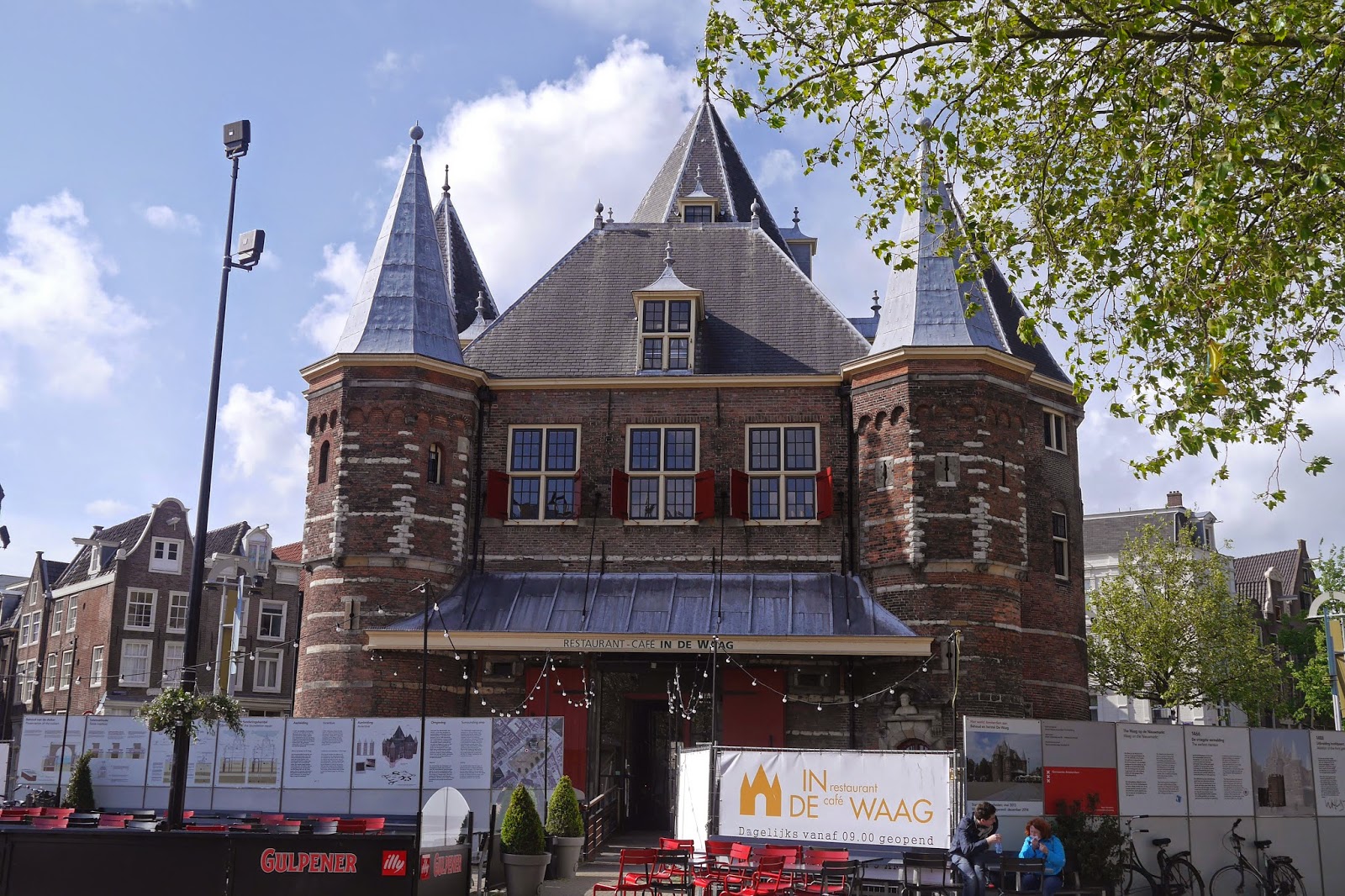The Koninklijk Palace
We have just arrived in Amsterdam for a short break and we decided on a short tour of the city centre to begin to orientate ourselves. We headed off from our hotel on Herengracht towards Dam Square. To be honest it is not a very impressive city centre square. The main building is the Koninklijk Palace, which we thought looked like a large city hall. And wonderfully, it was in fact built as the city hall in the mid-17th century by architect Jacob van Compen, only becoming a royal palace in 1808 when Napoleon's brother Louis was installed as ruler of the Nederlands. It has been state property since 1936, but is still apparently occasionally used by the royals.
Wedged into a corner of the square is the Niewe Kerk (New Church).
This dates from the 14th century, but has been destroyed by fire several times and also restored more than once.
Then were walked up Damrak, a wide Oxford Street-like road. On the right is the extraordinary former Stock Exchange building, the work of the great Dutch architect H P Berlage. It was built in 1903 and was remarkable for its time. The shallow relief sculptures for instance anticipate art deco by twenty years.The interior is evidently remarkable, but unfortunately we were unable to to get in to see it.
At the head of the street is the wonderful Centraal station of 1889, which effectively cuts Amsterdam off from the sea. It was built on three artificial islands. It now offers an incredible variety of modes of transport apart from rail: metro, water cruise, tram, bus, taxi, bicycle.
From here we found our way studiously along the edge of the famous red light district to the Oude Kerk, whose skyline presented an interesting mix of stone and brick gables topped by a splendid tower of 1565. The present structure dates from the 14th century and grew substantially over the centuries. The interior seemed rather incoherent to us.
We then briefly followed Zeedijk, originally the location of a 14th century dike, but now the centre of Amsterdam's small Chinatown, to reach Schreierstoren. This translates as Weepers' Tower and dates from 1480. It was once part of the city wall and was one of the few bits not demolished as the city expanded.
Now we headed south east to the Montelbanstoren, which can be seen in the background in the picture above. This dates from 1512 and stood outside the city wall as a defensive fortification.
The next stop was the Niewemarkt square. Here stands the wonderful many-towered Waag, originally a city gate (built in 1488) and later (1617) a public weigh house.
Finally, we crossed a couple of the draw bridges which Holland is famous for. The first one had the true-love padlcocks that we saw in Paris and which seem to have become a global phenomenon.
Three quick impressions: there are an extraordinary number of attractive buildings lining the canals, many of the older ones have a pronounced lean forwards and boy is the centre crowded. I later discovered that the forward tilt was by design, to make it easier to get stuff up to the top storey by means of an external hoist. The extent of the forward projection was limited by law.
Conditions: sunny and fairly warm until the end.
Distance: 3 miles.
Rating: four stars.









No comments:
Post a Comment